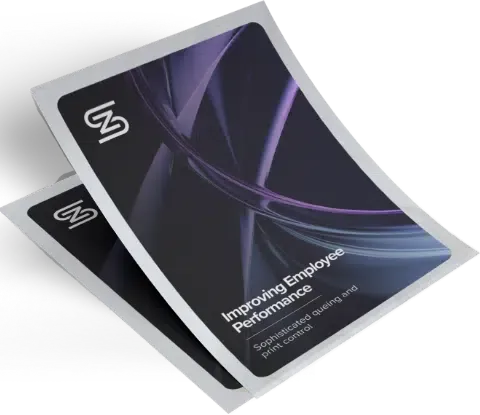I’ve been lucky enough to visit the Drupa print show in Dusseldorf a few times over the years but unfortunately can’t make it this year – so I’ve been diving into the exhibitor list and pre-announcements as a way of living vicariously through others.
One big takeaway for me is the number of outfits that are waving the “Industry 4.0” flag. This really piqued my interest because a) ZenSmart is a good example of an Industry 4.0 platform and b) it’s an enormous increase on the firms making this claim since the last Drupa – so what’s changed and why are so many companies branding themselves this way?
First, a bit of a history lesson: “Industry 4.0” as a term was first introduced in 2011 at the Hannover Fair (it’s a huge industrial technology trade show). It refers to the principle of “the fourth industrial revolution”, a new phase in manufacturing that integrates advanced digital technology to increase efficiency and connectivity. It extended beyond straight automation and introduced the concept of “smart systems” that incorporate data analytics, machine learning, and the Internet of Things (IoT) to create intelligent networks of machines and processes (a thought for another day, players often overcook the level of technology required to create a Industry 4.0 solution – it is possible to achieve a large percentage of the outcomes without reinventing the wheel and spending big dollars, but I’ll talk more on that another day).
The essence of Industry 4.0 lies in its ability to fuse the physical operations of manufacturing with digital technology to create a more agile, informed, and responsive production environment.
Fast forward to 2024 and circling back to Drupa – the catch with “Industry 4.0” is that it’s very rarely applied accurately. A bit like AI, the term is being grabbed by every marketing exec and copy writer and being hung off devices with the most slender connection to the concept.
Regardless of whether there’s real substance in the market, the thing I like about the trend is that it indicates an aspiration for all these brands and manufacturers to be richer and deeper solutions than they have been before. It’s an acknowledgement that the devices need to move beyond automation.
This trend is important. From our experience the average batch is invisible for 75% of the time that it is in production, with no accountability, no tracking and no recording of time and cost. The best thing that can happen is for smarter devices with API’s and live interfaces to drop to market providing the ability to close the gaps and knit them into a true Industry 4.0 solution.
We’ll be watching the rest of the Drupa media for how this plays out. Fingers crossed that it’s reality and not spin.




